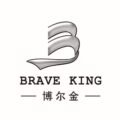
Laser engraving technology, as an advanced non-contact marking method, has experienced multiple stages of development, and its origin and evolution have shown remarkable technological progress. The following is a summary of the origin and development of Laser Engraving Machines
Origins Phase:
1. Discovery of Laser and Theoretical Foundation (Early 20th Century):
- The concept of lasers was initially proposed by Einstein in 1917. However, it wasn’t until 1954 that Charles Townes and Arthur Schawlow at Bell Labs provided the theoretical framework for lasers.
2. First Laser Marking Experiments (1960s):
- In the mid-1960s, laser technology was first applied in marking experiments, marking the entry of laser technology into the industrial manufacturing domain.
Development Phase:
3. CO2 Laser Engraving Machines (1970s):
- In the early 1970s, the introduction of CO2 lasers brought laser marking technology into practical applications. CO2 laser marking machines found wide usage in etching, cutting, and marking.
4. Rise of Nd:YAG Laser Engraving Machines (1980s):
- In the 1980s, the advent of Nd:YAG lasers enhanced the performance of laser marking technology. This technology featured shorter wavelengths and higher energy density, making it suitable for a broader range of materials.
5. Emergence of Semiconductor Laser Engraving Machines (1990s):
- With the maturation of semiconductor laser technology, laser marking machines became more compact, flexible, and easier to maintain. This phase witnessed the miniaturization and multifunctionality of laser marking technology.

Modern Phase:
6. Application of Femtosecond Laser Marking Technology (Early 21st Century):
- The application of femtosecond laser technology in the early 21st century expanded the scope of laser marking technology to areas such as micromachining and biomedical fields, offering finer and more precise marking effects due to extremely short pulse durations.
7. Laser Marking Machine in Smart Manufacturing (Recent Years):
- With the advancement of smart manufacturing, laser marking machines have found increased applications in automated production lines. Compared to traditional engraving and marking methods, laser marking technology is better suited to the high-efficiency and high-precision requirements of modern manufacturing.
8. Continuous Innovation in Laser Engraving Machines (Current):
- Presently, laser marking technology continues to innovate, giving rise to higher-powered lasers and finer control capabilities. This is in response to the growing demand across various industries for improved marking quality and speed.
In summary, laser marking technology has evolved from experimental stages to become a mature, efficient industrial marking technique. Its precise, non-contact marking on diverse materials has made laser marking machines indispensable in modern industrial production, spanning manufacturing, electronics, medical, and beyond.


